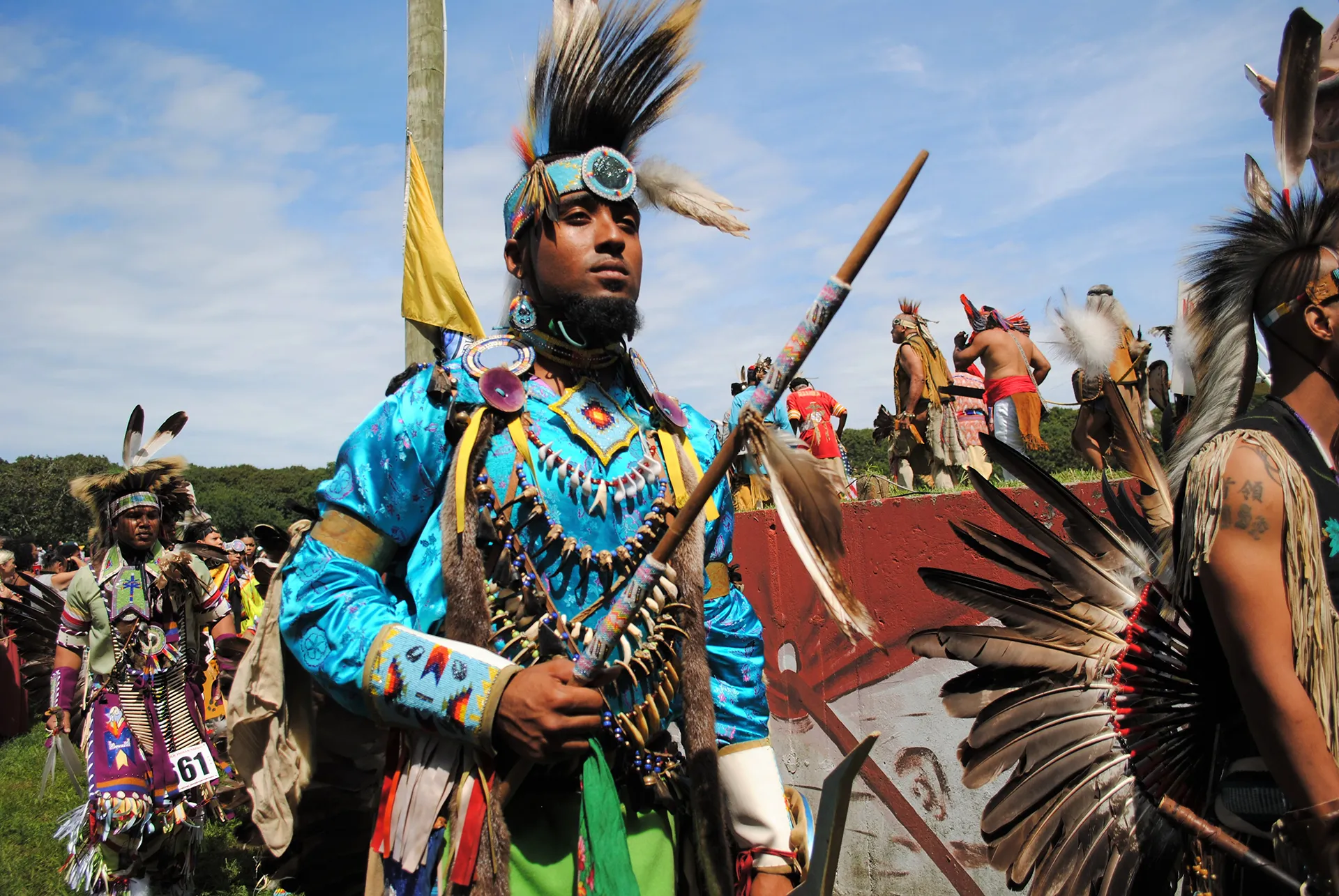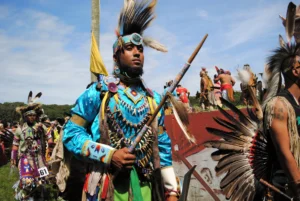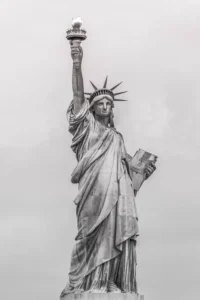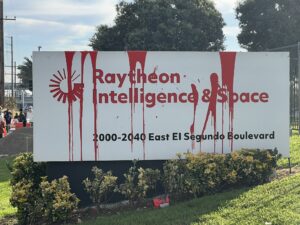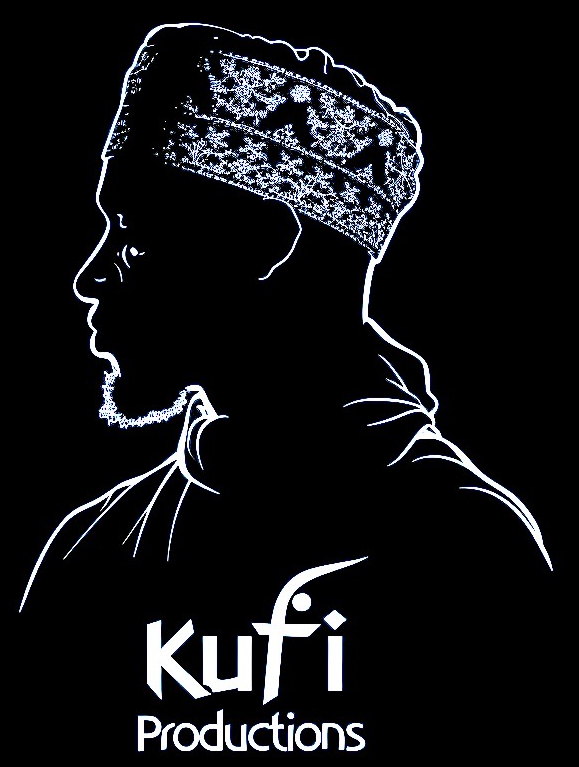The 79th Annual Shinnecock Powwow
Southampton, Long Island, is home to the annual Shinnecock powwow: a radiant celebration of resilience, culture, art, dance, and food. Located on the Shinnecock reservation, a mere two-hour car ride from New York City, the annual powwow happens every Labour Day weekend. I went for the first time this past August 30, 2025, and thoroughly enjoyed shopping, talking to powwow goers, vendors, and locals.
A Gathering of History and Splendor
The Shinnecock Powwow is more than an event, it is a gathering of nations, a reunion of families, and a testament to the endurance of Native culture on Long Island and beyond. Every year, thousands of people flood into the reservation, greeted by the sounds of drums echoing across the field, the brilliant colors of regalia catching the late-summer sun, and the smell of fry bread frying fresh in the air. Powwow goers range in age from newborns draped in handcrafted garments to elders whose powwow attendances number in the hundreds.
The celebration radiates joy, resilience, and diversity. Families sit under shaded tents eating Indian tacos, dancers whirl in the arena with beadwork glistening in splendor, and vendors proudly display artisanal crafts passed down through generations. For newcomers like me, it feels like stepping into a living story, one that is both ancient and ongoing.
Powwows across the United States serve as spaces of remembrance, education, and collective pride. They honor ancestors while creating a space for children to dance, learn, and feel at home in their traditions. The Shinnecock, whose history stretches back thousands of years on these very shores, open their arms to visitors, making the powwow both intimate and universal.
On the Powwow Trail with Xavier Miller
The first person I spoke with was Xavier Miller, a Bronx native who had traveled from Philadelphia that day with his wife. He explained that the Shinnecock Powwow is well known throughout the region: “The Shinnecock Powwow is one of the largest powwows in the Northeast. My wife, who is Navajo, she follows the powwow trail around the Northeast, and it’s kind of a word-of-mouth thing. But they also have flyers everywhere, too.”
The “powwow trail,” as he called it, stretches from May to November. By the time I met him in late August, he had already been to about twenty gatherings. “I can’t give you an exact count,” he admitted with a smile. “I’ve been to a lot. This is probably the 20th one I’ve been to this year.”
For first-time visitors like me, Xavier’s advice was straightforward: “Just enjoy it. Look around. Listen to the MC, the MC is usually really good about guiding people through the events that are happening and explaining the different dances and what they mean and symbolize. Just look and enjoy.”
What mattered most to him was the chance to be immersed in culture and community. “Probably just being around the culture,” he said. “Especially being out here, Navajo Nation, where my wife is from, is pretty far from here. But you’ll see all kinds of people at powwows, from all different tribes. It’s really about the community and being around in the culture.”
Like nearly everyone I spoke to that weekend, Xavier insisted on the importance of fry bread. Describing it as the powwow’s signature food, he grinned: “Fry bread is like the go-to. Definitely have to have fry bread when you come to a powwow.”
Although the drive from Philadelphia is three and a half hours, Xavier noted that it was a relatively short distance compared to the journeys of others. “People come from everywhere for Shinnecock so honestly, we’re one of the shorter commutes.”
When he spoke of his son, however, his voice took on a tone of pride. “Well, I have my son and he’s a Tiny Tot dancer. So probably the first time he started dancing was pretty cool. He’s six now, but he started dancing when he was around four. That was really cool.” Watching the next generation take the floor was, for him, the most radiant moment of all.
As we spoke, a shirt hanging at his booth caught my eye. Printed across it was the word “Native,” spelled out in a multitude of skin tones, a striking reminder that Indigenous people come in every shade and background. Xavier echoed that sentiment: Native identity, he explained, is as diverse as the world itself.
“For me and my community, it’s just about community,” he said. “It’s about being together with other people, maybe not at 100% same traditions but usually around the same culture and understanding and the same viewpoints.”
When asked how non-Native people can uplift Native communities year-round, he encouraged participation and awareness: “Just finding out what events are happening locally in your community. You know, they were here first. Everywhere you go, there’s usually tribes and different native community organizations, especially in New York. I know there’s a few, there’s a lot of organizations in New York you can contribute to year-round.”
Xavier’s reflections carried a steady wisdom: powwows are about collective belonging and continuity across generations, reminding us that Native people, in all their colours, traditions, and geographies, remain present, proud, and connected.
The Wisdom of Chantay Lynch
Hundreds of stands and booths line the powwow, boasting goods as ornate as handcrafted medallions, earrings, hand-sewn buffalo hide blankets, and toiletries made from coconut milk and natural oils. The air hums with the mingling scents of leather, sage, and sweetgrass. It was at a toiletry stand tucked in the summer shade, a table covered with jars of soaps and oils, their earthy fragrances drifting into the breeze, where I met Chantay Lynch. Lynch has been to more powwows than most people could ever imagine. For her, the powwow circuit is part of a deep tradition.
Chantay: “It’s tribal. So when you’re following tribes from the eastern shore, all the way down to Fort Lauderdale, all the way up to Canada. These are the eastern shore Indians, so the tribes run from all down those rivers. So that’s how we know about every tribe. You get to know the tribes in your area, and so each one has a powwow every year. We come in, we help celebrate with this nation. Even though we come from a different nation, we still come and celebrate with them on their day, you know what I mean, and be a part of the celebration.”
When I asked how many powwows she had attended, her answer was staggering.
Chantay: “Approximately, I want to say, approximately about 500.”
I reacted with amazement.
Suha: “Wow, oh that’s incredible. 500? Gunning to get that number one day.”
Chantay: “And I was an adolescent, they come at the adolescent stage. And then I was, you know, I just went powwow to powwow.”
What she loves most is the chance to share Native culture with the uninformed.
Chantay: “Oh, the fact that we can share our culture and our experiences with others that don’t know, because a lot of people are still uninformed of where the American Indians are now. You know what I mean? And some people don’t even believe that we still exist! So through education and knowledge and wisdom, we learn to pass it on to those to come. And that way, their children will be able to look at it differently.”
Her advice to newcomers was simple yet profound.
Chantay: “Enjoy. Take in as much as you can in. Grab the knowledge that you get from each one, you come in contact with.”
When asked about her favorite things to buy:
Chantay: “I do beadwork, lots of beadwork. And my favorite snack is an Indian taco with fry bread. You can make so many things with fry bread—it can be a whole meal. We’ll have it with buffalo, lamb, or whatever we want. Add condiments, and it looks like a taco.”
Her most memorable powwow moment is etched in splendor.
Chantay: “A demonstration I attended in Washington, D.C. Before opening ceremonies, while the speakers were talking in front of the memorial, an eagle flew by. Out of the blue, it circled all around us. The eagle is the king of the sky, our bird, the closest we have to the celestial on earth. That’s why we honor everything—every animal, every tree, everything that gives us shade or air comes from the Creator. Everything has life.”
For her, powwows are about gathering and trade:
Chantay: “It’s a time when we can all get together, share, and trade. Vendors here trade skins for beads or other goods. It’s our way of currency.”
And her philosophy of “truth medicine” stood out:
Chantay: “By letting the uninformed become informed. If you’ve never had the experience, you need to come at least once. I always tell my friends, ‘Next week you’re coming with me.’ When you see it, you see nothing but love. We don’t turn anyone away. That’s not good medicine. We carry truth medicine so everyone feels comfortable to ask questions…”
Her words radiated wisdom and resilience: “As long as we keep saying, ‘We’re here,’ people will know that’s the truth.”
Kathryn: Reunion, Joy, and Frybread
After rounds of shopping made under the melting August sky, I stopped for lunch on the reservation. I enjoyed a hearty meal of smoked salmon with rice and mixed vegetables, followed by a dessert called blueberry slump and a side of fry bread dusted with maple syrup, cinnamon sugar, fruit jam, and powdered sugar. Before devouring my well-earned meal, I met Kathryn on the line for food. She reminded me that powwows are as much about family reunions as they are cultural showcases.
Kathryn, who had traveled in from New Jersey, explained that for her the Shinnecock Powwow is simply part of life: “I’m actually Shinnecock myself, so it’s just a family thing. Born Shinnecock.”
Unlike Chantay, who has attended hundreds of powwows, Kathryn was more modest about her experience. “I don’t even know,” she laughed. “I’d just say about 10.” What mattered more to her wasn’t the number, but the feeling each one brings. For her, powwows are about joy, movement, and reconnection: “The dancing, yeah. Just the celebration of our culture and heritage, and seeing family I haven’t seen in a while. It’s usually like a reunion.”
Her advice for first-timers reflected the same openness. She encouraged newcomers to soak it all in, to be present and curious: “Just enjoy it. Take it all in. Take photos. Try different foods, things you’ve never had before.”
Naturally, her food recommendation was fry bread, a dish that had already emerged as the powwow’s collective favorite. “Definitely fry bread,” she said without hesitation. “Yeah, you’ve got to get the fry bread.”
Though she travels four hours from New Jersey, the distance doesn’t deter her. The draw is the togetherness: “Just being together, remembering everything that we’ve been through. Never forgetting, but also celebrating and keeping our traditions alive.”
When asked how non-Native allies could help, Kathryn kept it simple. A little respect, she said, goes a long way: “Show a little more respect. Support by shopping where the products are actually made by Native people.”
The Collective Thread
Across every conversation, whether it was Xavier describing his son dancing, Chantay witnessing an eagle circling the sky, or Kathryn calling the powwow a reunion, certain threads connected them all: joy, resilience, and community. And always, fry bread.
Food, art, dance, trade, and stories weave together to form a radiant whole. Powwows are not just performances; they are shining examples of breathing traditions, a splendor of culture sustained by people who refuse to let it fade.
For me, attending the Shinnecock Powwow for the first time was a radiant reminder that Native culture is alive, thriving, and ready to welcome anyone who comes with respect and open eyes. The collective joy, diversity, and wisdom I witnessed will stay with me long after the last piece of frybread is eaten and the drums have quieted.
Suha Syed,
Kufi Productions

